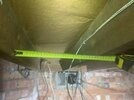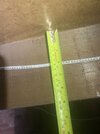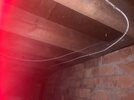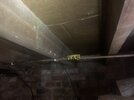- Joined
- 7 Sep 2022
- Messages
- 4,351
- Reaction score
- 1,244
- Country

Tube is easier imho, the grey stuff doesn't bend but you can get self adhesive black stuff that does

Oh one more, sorry.
For lagging i forgot to ask. Does it make a huge difference if it’s the wool wrap type or foam tube type?
View attachment 287935










Doesn't make sense to me; the tube shaped stuff that goes around pipes is insulation and that's a lot closer to the pipe than 100mmWill do thanks,
I read plumbing pipes should have a clearance of 100mm or so from the insulation too. So sensible just to stick to that as a rough guide?
width: before you unroll the roll, put a saw through the whole thing at the width you want plus a little. Let your wool expand back to its normal size on the floor befor picking it up and pushing it between joists and dont over compress it - it doesn't take much to stop it expanding back and you want it fluffed up as deep as possibleWidth - The Combi roll I bought (1140mm width) can be split into 3 lots of 380mm so i think that will be fine, presuming I can squish the 380mm into a 300mm wide gap without any issues?
Depth - With the depths at 150mm, assuming vertically compressing the 200mm roll a little bit here is also fine? Or better to let it bulge a bit if I use bird netting rather than chicken wire for example?
If you need to find a tradesperson to get your job done, please try our local search below, or if you are doing it yourself you can find suppliers local to you.
Select the supplier or trade you require, enter your location to begin your search.
Are you a trade or supplier? You can create your listing free at DIYnot Local
